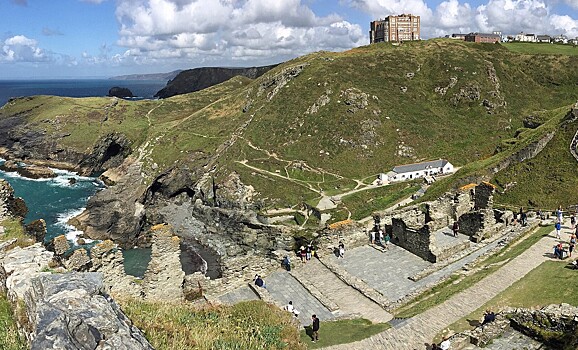From King Arthur's castle to Eldorado: mythical places that exist in reality
History knows many mythical lands: from the homeland of great kings to the earthly abode of gods and monsters. And although the actual existence of Atlantis or Shangri-La is unlikely, there may be more truth in the myths than we think. Smithsonian Magazine talks about mythical places that may actually exist.

Troy, Türkiye
Troy, the city at the center of Homer's Iliad and Virgil's Aeneid, is considered one of the most legendary locations in classical Greek mythology. There are amazing details woven into the stories about this place, but archaeologists believe there is some truth in them. The Trojan War may actually have happened in reality: 150 years of excavations at the supposed site of the city have shown that it was inhabited 4,000 years ago. In other words, right at the end of the Bronze Age – according to Homer, that's when war broke out.
Jellyfish cave, Gibraltar
Ancient sailors considered the Medusa cave at the foot of the Pillars of Hercules to be the limit of the world known to humanity. However, a 2021 scientific paper theorizes that it may have played an even larger role in Greek mythology. Deep inside the cave, archaeologists discovered fragments of a large ceramic Gorgon statue dating from the 6th century BC. The Gorgons are three monster sisters who terrorize Greek sailors, turning them to stone in the blink of an eye. It is likely that this cave was a place of pilgrimage for ancient sailors who made the journey to pay tribute to Perseus' victory over Medusa.
King Arthur Castle, England
Tintagel Castle on Cornwall's rocky coast has been associated with King Arthur ever since writer Geoffrey of Monmouth named the fortress the legendary king's birthplace. However, until recently, no one knew that under the ruins of the castle there was an even more ancient settlement, which somewhat confirms the myths. Archaeologists believe that in the past this place actively received goods and luxury goods from Mediterranean countries. It is difficult to say who ruled these lands in the 5th and 6th centuries, but the findings are consistent with the theoretical reign of King Arthur.
Eldorado, Colombia
The Spanish conquistadors were the first to describe a legendary kingdom in South America with unprecedented wealth, whose king, upon ascending the throne, covered himself with gold dust and performed The ritual of throwing treasure into the center of a sacred lake. Evidence of conquistadors dates back to 1541, and since then, researchers have tried without success to find El Dorado in Colombia, Venezuela, Guyana and Brazil.
However, archaeologists believe that stories about the “city of gold” are not 100% fiction. The lakes have always been places of sacrifice for ancient Colombians, and it is likely that the rituals attributed to El Dorado took place in some of the lakes. But Guatavita Lake is considered the main suspect: it is from here that most historical artifacts, including precious ones, have been salvaged over the past 400 years.
Minotaur Labyrinth, Greece
While building a new airport on the island of Crete, workers made a surprising discovery. Specifically, the remains of a circular structure surrounded by eight walled stone rings. The architecture of the ruins is reminiscent of the tombs of the Minoan civilization, but anyone who is at least a little familiar with Greek mythology will name another association – the minotaur's labyrinth. Although archaeologists have yet to fully explore this structure, its architectural similarities to the mythical labyrinth suggest it may have been one of the origins of the legend.




Leave a Reply